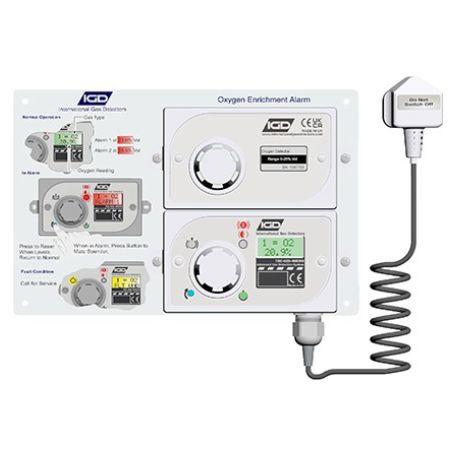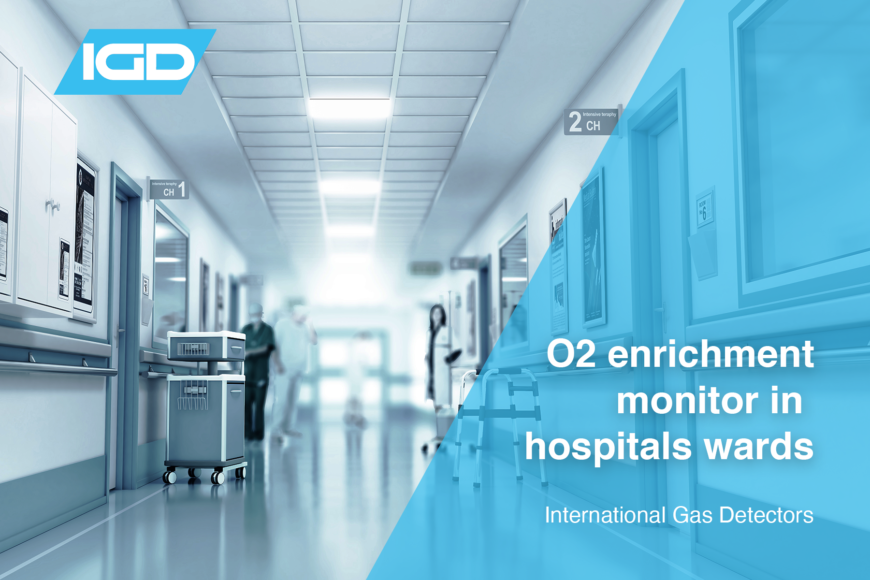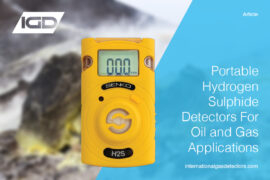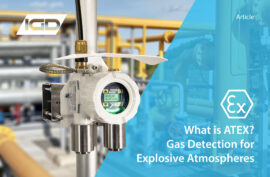What is the importance of using an oxygen enrichment monitor in hospital wards? With the current pandemic of COVID-19 affecting nearly every country in the world, health officials are releasing daily updates and guidelines to combat the virus. The latest UK government guidelines highlights the hazard of increased oxygen in wards due to the high density of ventilators. This has been highlighted as a potential combustion risk by many leading health officials.
Latest statement from the UK Government states: “The density of ventilators may enrich the air with oxygen, increasing the combustion risk. Ensure there is good natural and mechanical ventilation.” The guidelines go further to state that “teams should carry out regular monitoring of potentially exposed rooms to ensure oxygen enrichment is controlled”. Unfortunately, you cannot solely rely on ventilation to ensure a safe working atmosphere. This is where a fixed gas detection system decreases the inevitable safety gap. An Oxygen enrichment monitor will continuously monitor the area for increased levels of oxygen and will initiate ventilation control when the oxygen level increases. If the ventilation fails then the second alarm will initiate, which can be connected to the site wide BMS or fire system.
IGD’s Oxygen Enrichment Monitor Solutions:
IGD have several solutions to help hospital wards with their oxygen enrichment monitor requirements. We can provide quick installation systems, which maintenance staff can install themselves without the aid from IGD. The TOC-625-NHS is perfectly suited for this. It is supplied with a pre-calibrated oxygen sensor and auto setup. This means facilities staff can install the system without requiring an IGD engineer. Thus, reducing implementation time and minimal disruption to the ward. It has a number of relay outputs to both control ventilation and connect to a site wide fire system/building management system (BMS).
Ian Davies, Estates Manager, from the Bolton Royal Infirmary recently quoted about our systems:
“Absolutely awesome bits of kit, ideal, so straight forward and basic – even I could understand them. So simple, just plug in and, after warm up, off it goes. This will make it so easy for the fire officers to be able to reliably and confidently reassure that oxygen concentration levels are not an issue in the high usage areas….or will let us know we have a problem! Really quick turn round and delivery, thanks for the assistance everyone [IGD and HAC Technical], at least one headache resolved!! Overall very happy with this”

Multiple Wards – One Complete Solution
If there are many wards with ventilators, then our 2-Wire Addressable systems are the perfect solution. Utilising only a two-core cable for power and communication, and up to 32 sensors per highway. This means that there is minimal disruption onsite when installing the oxygen enrichment monitors and a massive reduction in installation cost compared to current systems on the market. Furthermore, the controller can be connected to control individual vents or site wide vents in the case of an alarm. Rooms Status Indicators can be placed outside of each isolated room to provide a clear display of current Oxygen levels in the room before entry. Finally, you have the ability to connect remote GSM alarms to the controller. In the case of an alarm, a text/email alert can be sent out to all the relevant members of staff to provide 24/7 warnings.
Our fixed oxygen enrichment monitors have an industry leading operational lifetime of 5 years+. Check our article here to learn more about our lead-free oxygen sensors.
We are also proud that we able to assist a number of UK NHS facilities already requesting Oxygen enrichment monitors. We are endeavouring to despatch our oxygen enrichment monitors within 24 hours, to meet their requirements.
Further reading: Check out our Lead Marketers LinkedIn article which highlights why even in large open space hospital wards; it is still important to monitor for oxygen enrichment.
Should I Use a Portable Oxygen Detector Instead?
A portable Oxygen detector should only be used where either there is no space to fit a permanently fixed system; an example of this would be a area classed as confined space such as sewer works or large open sites. In addition to this portable monitors can be used in conjunction with a fixed gas detection system as well. IGD would recommend using portable oxygen detectors in conjunction with a fixed oxygen enrichment monitor with this particular application. The site can use the monitors as both alarm verification tools and PPE for personal protection. However, if using the monitor as PPE it is imperative that it is cleaned correctly. Further to this, using a portable monitor has the potential to be an avenue of cross contamination out of the isolated wards. Therefore, additional work and maintenance is required to ensure the monitor is correctly sterilised, work that is not required with a fixed oxygen enrichment monitor.
If you require an Oxygen enrichment monitor system or would like to learn more, get in touch today:
sales@internationalgasdetectors.com
www.internationalgasdetectors.com/contact
+44(0)161 483 1415
Want to stay updated with the latest news and updates? Subscribe to our monthly email here.




